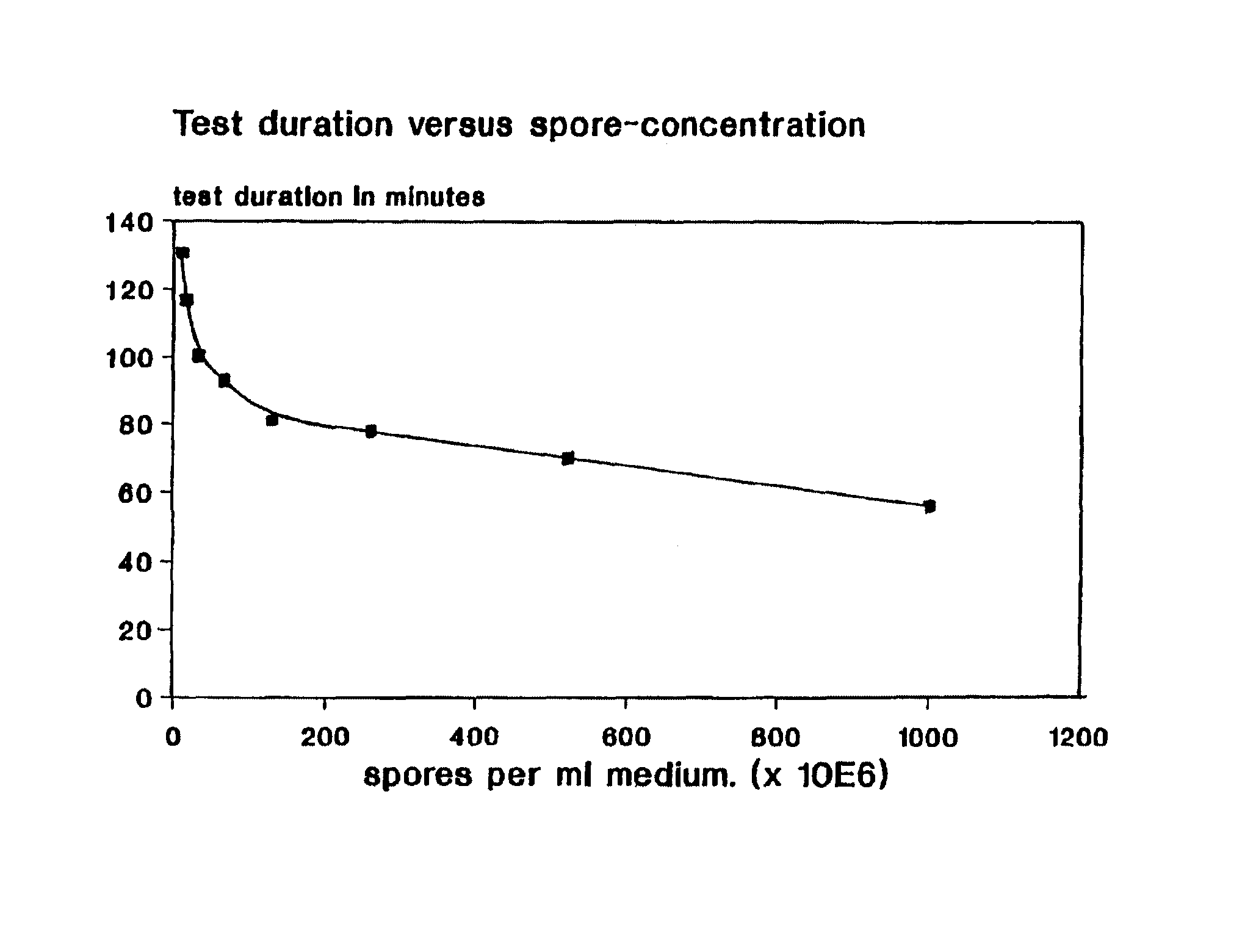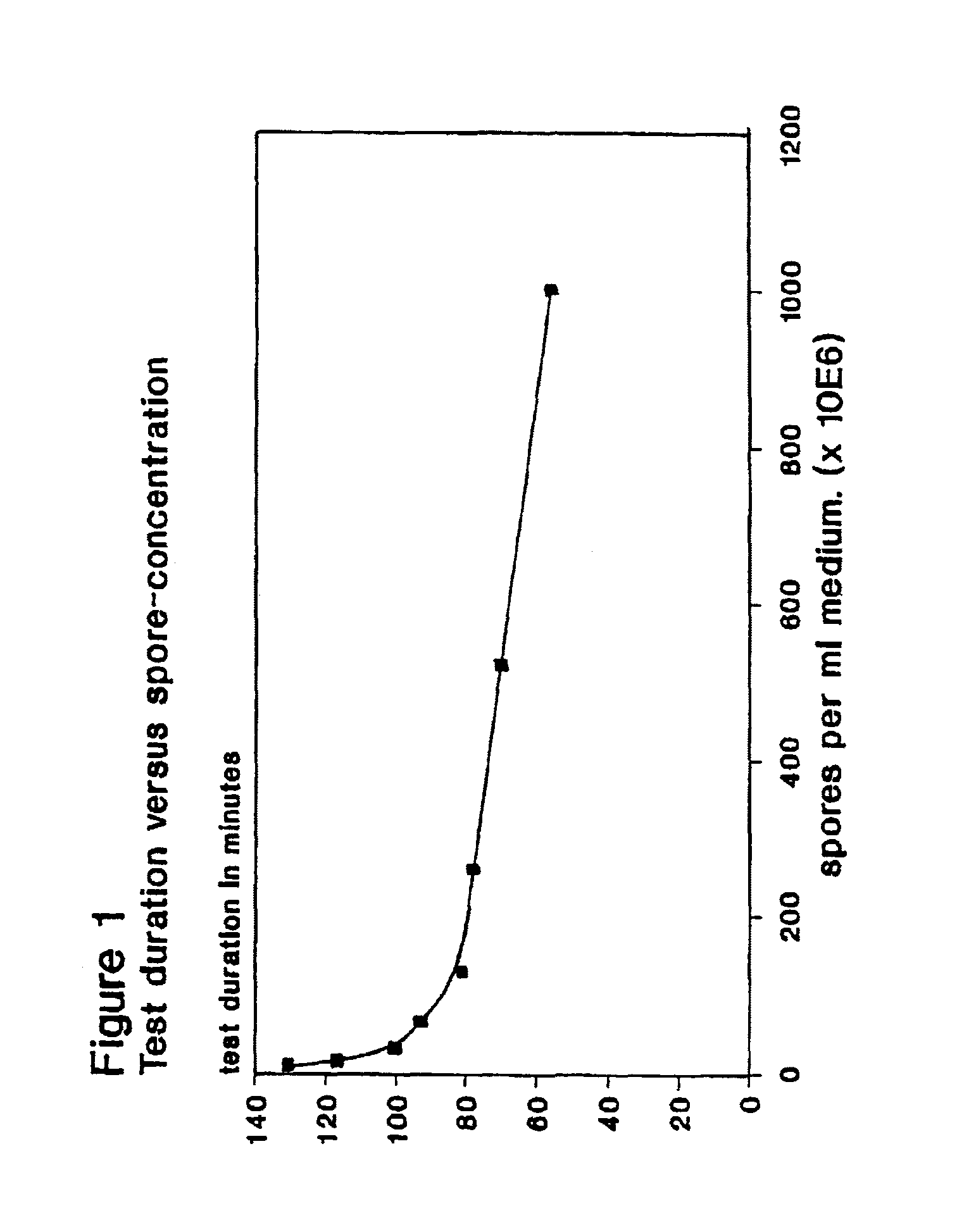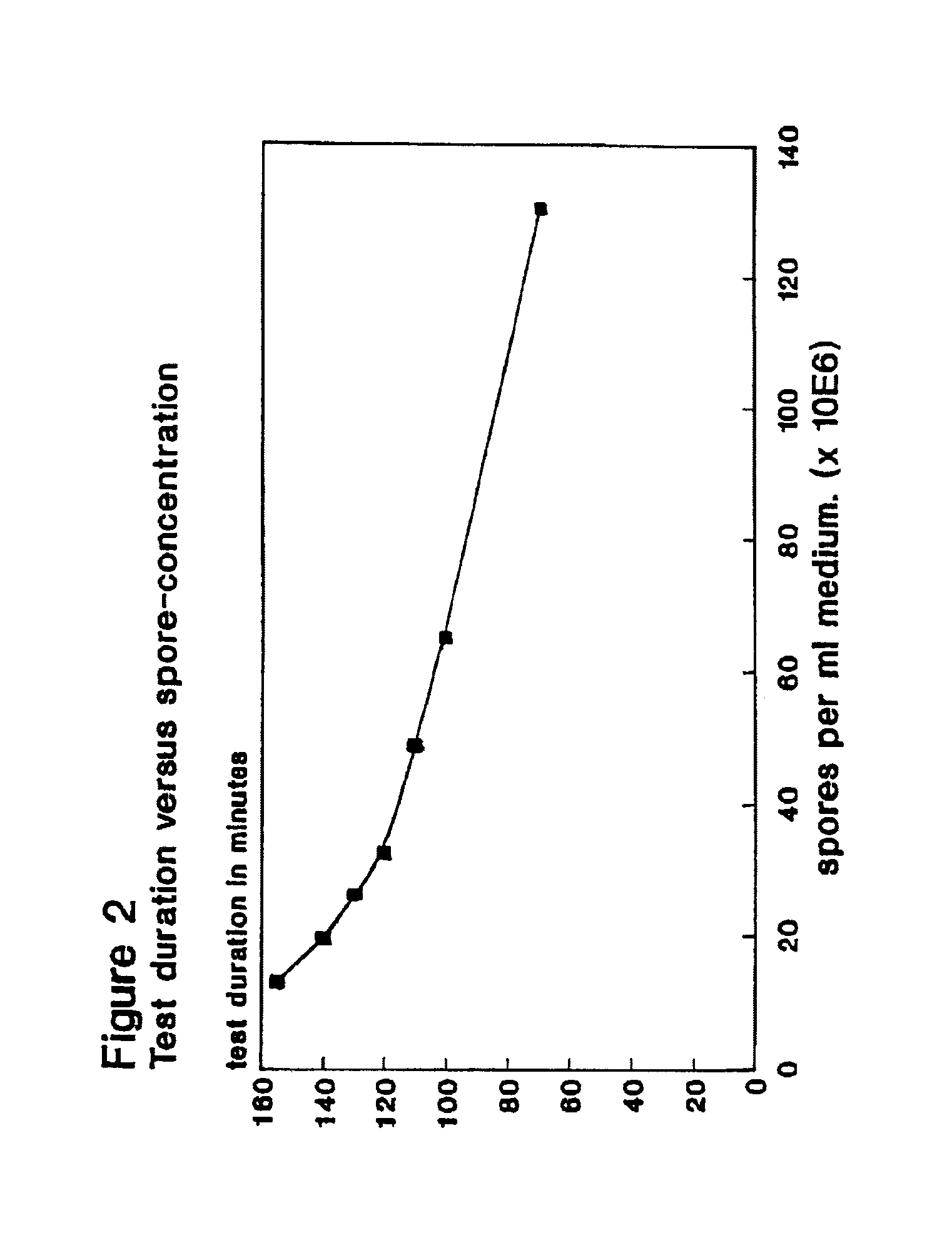Rapid microbiological test for the detection of antibacterial compounds
a microbiological test and antibacterial technology, applied in the field of rapid microbiological test for the detection of antibacterial compounds, can solve the problems of not being able to carry out a microbiological test for antibacterial compounds, and losing the sensitivity of relevant antibacterial compounds
- Summary
- Abstract
- Description
- Claims
- Application Information
AI Technical Summary
Benefits of technology
Problems solved by technology
Method used
Image
Examples
example i
Preparation of Test Tubes of Type A to Detect Antibiotics
Test tubes of type A contained an agar medium prepared as follows:
A solution was made of 12 g agar, 9 g sodium chloride and 50 ml of a 0.1 M triethanolamine buffer solution (pH=8.0) in 1000 ml distilled water. An amount of a solution of bromocresolpurple to give a final concentration of 20 mg per 1000 ml was also added. The final solution was sterilized for 20 minutes at 121° C. and cooled to about 60° C.
To this solution different amounts of a suspension of Bacillus stearothermophilus var. calidolactis C953 spores in distilled water were added to give final concentrations between 105 and 1010 spores per ml.
Sterile tubes with a diameter of about 9 mm were filled with 0.3 ml of the agar solution under aseptic conditions and immediately sealed, e.g. with aluminium foil. The agar solution in the test tubes was allowed to solidify in the test tubes while the test tubes were held in an upright position.
The tubes were stored at a tem...
example ii
Preparation of Test Tubes of Type B to Detect Antibiotics
Test tubes of type B contained an agar medium prepared as follows:
A solution was made of 10 g agar, 9 g sodium chloride, 2 g glucose, 2 g peptone, 2 g tryptone, 4 g yeast extract and 50 ml of a 0.1 M triethanolamine buffer solution (pH=8.0) in 1000 ml distilled water. The final solution was sterilized for 20 minutes at 121° C. and cooled to about 60° C.
An amount of a solution of Brilliant Black to give a final concentration of 80 mg per 1000 ml and an amount of a solution of Toluidine Blue to give a final concentration of 3 mg per 1000 ml were also added.
To this solution different amounts of a suspension of Bacillus stearothermophilus var. caildolactis C953 spores In distilled water were added to give final concentrations between 108 and 1010 spores per ml.
Sterile tubes with a diameter of about 9 mm were filled with 0.3 ml of the agar solution under aseptic conditions and Immediately sealed e.g. with an aluminum foil. The agar...
example iii
Preparation of Nutrient Tablets
A mixture was made of 100 g dextrose, 160 g Avicel PH101, 50 g tryptose, 14 g yeast extract and 15 g precirol. This mixture was sufficient to prepare about 18000 tablets with a diameter of approximately 3 mm and a thickness of approximately 1.9 mm.
PUM
| Property | Measurement | Unit |
|---|---|---|
| melting temperature | aaaaa | aaaaa |
| melting temperature | aaaaa | aaaaa |
| temperature | aaaaa | aaaaa |
Abstract
Description
Claims
Application Information
 Login to View More
Login to View More - R&D
- Intellectual Property
- Life Sciences
- Materials
- Tech Scout
- Unparalleled Data Quality
- Higher Quality Content
- 60% Fewer Hallucinations
Browse by: Latest US Patents, China's latest patents, Technical Efficacy Thesaurus, Application Domain, Technology Topic, Popular Technical Reports.
© 2025 PatSnap. All rights reserved.Legal|Privacy policy|Modern Slavery Act Transparency Statement|Sitemap|About US| Contact US: help@patsnap.com



